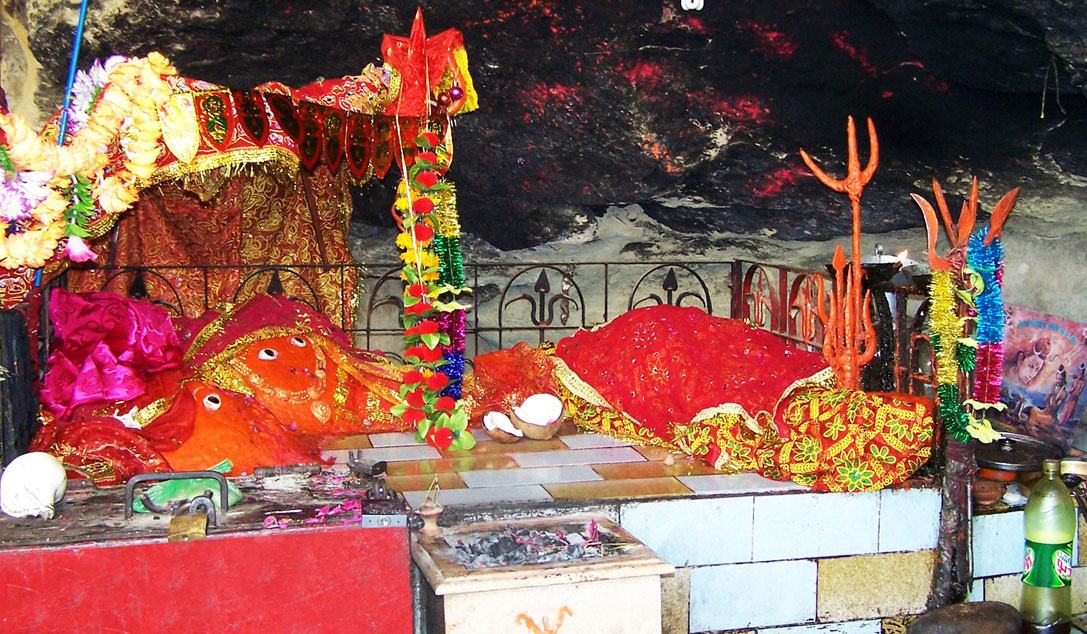Other Devotee Communities of Hinglaj Mata
Worship of the Goddess Among Brahmins and Other Hindu Castes
Although Hinglaj Mata is primarily revered as the Kuldevi (family deity) of the Khatri community, her worship extends beyond this group. Brahmins and other Hindu castes also worship the goddess, recognizing her as a powerful symbol of Shakti. Across various Hindu communities, Hinglaj Mata is regarded with immense reverence and devotion.
In the Brahmin community, Hinglaj Mata is worshipped as the Mahashakti (Supreme Power). Ancient religious texts describe her as the Adi Shakti, the primordial force of creation. Brahmins especially offer their prayers to the goddess during significant religious events, most notably during Navratri. The rituals involve chanting sacred mantras, performing Havans (fire rituals), and reciting special stotras (hymns) dedicated to the goddess.
In addition to the Khatris and Brahmins, other communities such as Vaishyas, Shudras, and many others also worship Hinglaj Mata. These communities offer their devotion at the goddess’s feet, praying for peace, prosperity, and protection in their lives. It is widely believed across these groups that the blessings of Hinglaj Mata bring harmony to families and resolve life’s challenges.
Devotional Traditions in Pakistan and India
Hinglaj Mata’s Shakti Peeth is located in the Balochistan province of Pakistan and serves as a significant religious pilgrimage site for the Hindu community. Despite its location in Pakistan, deep devotion to the goddess exists in both India and Pakistan, forming an enduring tradition of faith.
Devotional Practices in Pakistan: The temple of Hinglaj Mata is one of the few Hindu pilgrimage sites in Pakistan, and it holds immense spiritual significance for the Hindu communities living there. The goddess is especially venerated in the Balochistan and Sindh provinces, where Hinglaj Mata’s devotion is widespread. Every year, particularly during Navratri, thousands of Hindu devotees make the journey to the temple to seek the blessings of Hinglaj Mata. Among the Hindu community in Pakistan, her worship is not only a religious practice but also a deeply rooted cultural tradition.
Hindu communities settled in different parts of Pakistan, especially people of Balochistan and Sindh, undertake this pilgrimage. For them, receiving the darshan (sight) of the goddess is a significant spiritual experience, providing both inner peace and strengthening their faith.
Devotional Practices in India: In India, Hinglaj Mata holds a special place of devotion among Hindus. Even though the temple is located in Pakistan, the goddess commands great reverence within Indian society. Many smaller temples and shrines dedicated to Hinglaj Mata have been established across India, where devotees regularly offer prayers.
Hinglaj Mata’s worship is particularly prominent in states like Rajasthan, Gujarat, Punjab, and Haryana. While the Khatri community plays a central role in the worship of the goddess, other Hindu communities also offer their devotion. Every year during Navratri, special ceremonies and prayers are held in honor of the goddess, including the singing of devotional bhajans and performing aarti.
For those who are unable to make the pilgrimage to the Hinglaj temple in Pakistan, visiting local temples in India provides an opportunity to express their devotion. Religious organizations and communities conduct regular worship and events dedicated to Hinglaj Mata. Furthermore, the tradition of devotion is kept alive through digital platforms. The use of social media and the internet has made it possible for devotees to listen to bhajans online, study stories associated with the goddess, and participate in the faith from afar.
